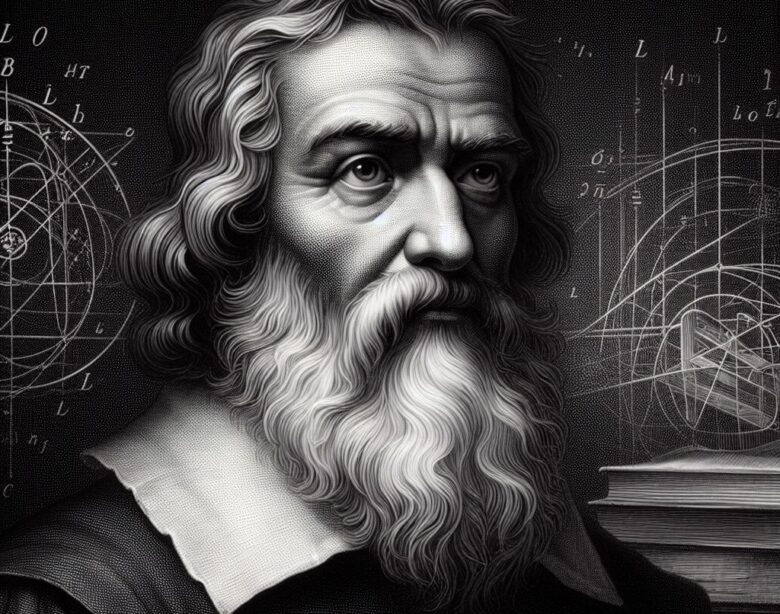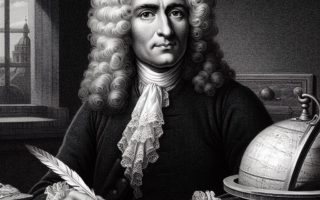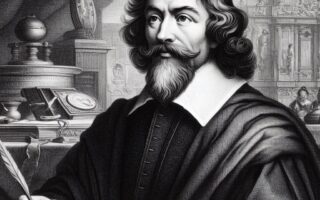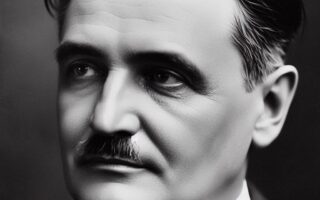Galileo Galilei: The Mathematician Who Revolutionized Science
Galileo Galilei (1564–1642), an Italian polymath, is widely regarded as one of the greatest figures in the history of science and mathematics. His revolutionary ideas and innovations shaped the course of modern science, laying the foundation for various scientific disciplines, including physics, astronomy, and mathematics. His contributions to the scientific method, mathematical analysis, and observational astronomy have earned him the titles of the “father of modern physics” and the “father of modern science.” Galileo’s work was instrumental in the transition from the Aristotelian worldview to a new, empirical approach to understanding the universe.
Early Life and Education
Born on February 15, 1564, in Pisa, Italy, Galileo was the eldest of six children in a musical family. His father, Vincenzo Galilei, was a renowned musician and theorist, and he encouraged his son’s intellectual curiosity. Despite showing a keen interest in mathematics from a young age, Galileo was initially sent to the University of Pisa to study medicine. However, it was his love for mathematics that ultimately took precedence, and he shifted his focus to studying the works of Euclid and Archimedes.
Galileo left the university without obtaining a degree but soon began teaching mathematics in Florence and Siena. His passion for the subject deepened as he became involved in practical mathematics, focusing on the geometry of motion, which would later become central to his scientific career.
Galileo and Mathematics: A Foundation for Scientific Revolution
Although Galileo is best known for his contributions to astronomy and physics, his work was deeply rooted in mathematics. He used mathematical principles to challenge the prevailing Aristotelian view of the universe and to develop new theories that revolutionized how people understood motion, space, and time.
Kinematics and the Study of Motion
One of Galileo’s most significant contributions to mathematics was his study of motion. Before Galileo, the Aristotelian view of motion, which dominated scientific thought for centuries, suggested that heavier objects fell faster than lighter ones. Through experiments—most famously dropping objects from the Leaning Tower of Pisa—Galileo disproved this notion. He demonstrated that all objects, regardless of their mass, fall at the same rate in a vacuum. This idea would later become known as the principle of uniform acceleration.
Galileo developed mathematical descriptions of motion, particularly the motion of objects under constant acceleration. He formulated the law of free fall, which states that the distance an object falls is proportional to the square of the time it has been falling (d ∝ t²). This relationship is a key mathematical principle in the study of motion and forms the basis of classical mechanics.
Galileo’s work in kinematics laid the groundwork for future scientists, most notably Isaac Newton, who would build on Galileo’s findings to develop the laws of motion and universal gravitation.
The Use of Geometry in Scientific Inquiry
Galileo’s approach to scientific investigation was highly mathematical. He believed that nature was inherently mathematical and that understanding the universe required the application of mathematical principles. He famously wrote, “The book of nature is written in the language of mathematics.”
In his study of projectile motion, Galileo combined geometry and experimentation to show that the path of a projectile follows a parabolic trajectory. This was a groundbreaking discovery because it was the first time that the motion of an object in two dimensions had been mathematically described. Using geometric analysis, Galileo demonstrated that the horizontal and vertical components of a projectile’s motion could be treated independently, a key insight in understanding complex systems of motion.
Galileo’s use of geometry also extended to his work in astronomy. He calculated the height of mountains on the Moon by measuring the shadows they cast and used geometric principles to study the phases of Venus, providing crucial evidence for the heliocentric model of the solar system.
Galileo’s Impact on Astronomy
While Galileo made major strides in mathematics, his most famous contributions lie in the realm of astronomy. In 1609, he heard about the invention of the telescope in the Netherlands and quickly constructed his own improved version. With his telescope, Galileo made a series of astronomical discoveries that challenged the geocentric model of the universe, which had placed the Earth at the center of all celestial motion.
Observations of the Moon
One of Galileo’s first major astronomical discoveries was his observation of the Moon’s surface. Contrary to the Aristotelian belief that celestial bodies were perfect and smooth, Galileo observed mountains, craters, and valleys on the Moon. He used geometric principles to estimate the height of the mountains, proving that the Moon was not a smooth sphere but a rugged and imperfect body.
The Moons of Jupiter
In 1610, Galileo made one of his most famous discoveries: the four largest moons of Jupiter—Io, Europa, Ganymede, and Callisto, now known as the Galilean moons. This was a monumental discovery because it showed that not everything in the universe revolved around the Earth, providing strong evidence for the Copernican heliocentric model, which placed the Sun at the center of the solar system.
Phases of Venus and Heliocentrism
Galileo’s observations of the phases of Venus provided conclusive evidence in favor of the heliocentric model of the solar system. He observed that Venus exhibited a full range of phases similar to the Moon, which would only be possible if Venus orbited the Sun. This directly contradicted the Ptolemaic geocentric model, which could not explain the observed phases of Venus.
Galileo’s support of heliocentrism put him at odds with the Catholic Church, which held to the geocentric model. In 1633, Galileo was tried by the Roman Inquisition and forced to recant his support for heliocentrism. He spent the remainder of his life under house arrest, but his ideas continued to spread, influencing future generations of scientists and mathematicians.
Galileo and the Scientific Method
Another lasting legacy of Galileo is his contribution to the development of the scientific method. He emphasized the importance of experimentation and observation in the study of nature, departing from the purely philosophical approach of the Aristotelian tradition. Galileo combined empirical evidence with mathematical reasoning, creating a new method of scientific inquiry that remains central to modern science.
Galileo’s insistence on testing hypotheses through experimentation and analyzing results using mathematics laid the foundation for the modern scientific method. His work in this area had a profound impact on the development of science as a systematic discipline.
Legacy in Mathematics and Science
Galileo’s contributions to mathematics, physics, and astronomy were revolutionary. His application of mathematics to the study of motion and celestial bodies helped to displace the Aristotelian worldview and usher in the age of modern science. His work directly influenced later scientists, most notably Isaac Newton, who credited Galileo’s studies of motion with inspiring his own laws of motion.
Moreover, Galileo’s commitment to mathematical rigor and empirical observation shaped the way science is practiced today. He transformed mathematics from a purely theoretical discipline into a powerful tool for understanding the natural world.
Conclusion
Galileo Galilei’s contributions to mathematics and science were transformative. His work in developing the mathematical principles of motion, his groundbreaking astronomical discoveries, and his formulation of the scientific method laid the foundation for modern science. Despite facing opposition from religious authorities, Galileo’s ideas prevailed, and his legacy continues to inspire scientists and mathematicians. His vision of a universe governed by mathematical laws has become a cornerstone of scientific thought, ensuring that his influence endures in the study of mathematics, physics, and astronomy.
Please Visit Our Sponsors:
We only support vendors that we use ourselves in our home. The links below are our own links or affiliate links but know that we use all of these now, or have in the past. As the author/creator of this blog, I also tutor mathematics on Wyzant, sell on Etsy, create content on TpT, and learn Korean on Rosetta Stone.





